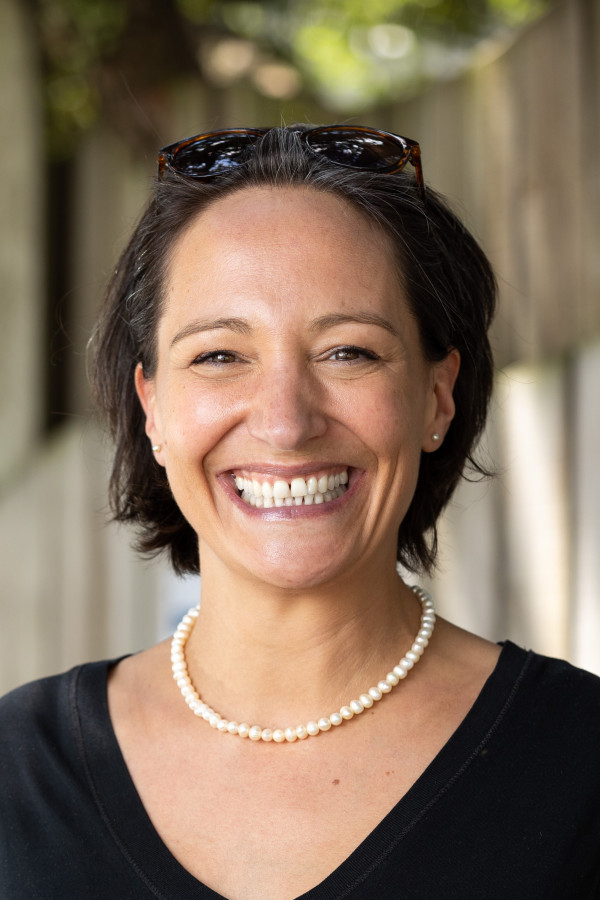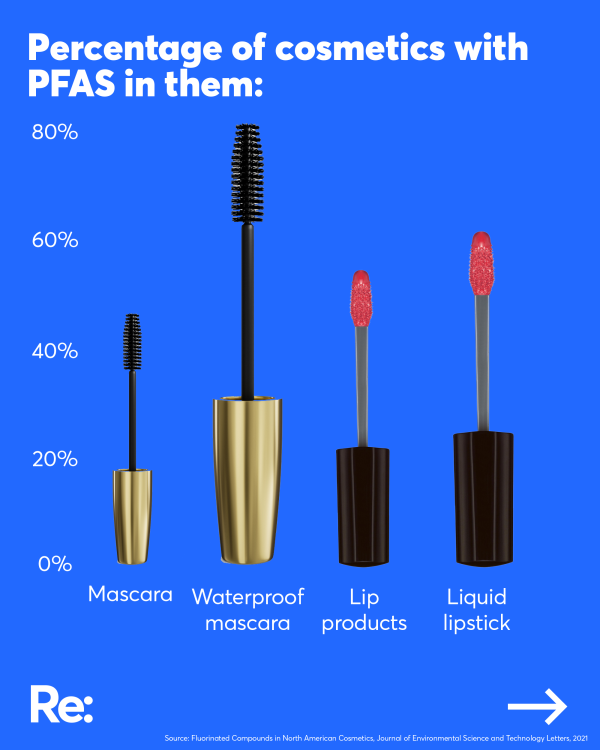New Zealand’s Environmental Protection Authority (EPA) will ban so-called “forever chemicals” in cosmetic products from the end of 2026.
The chemicals are called PFAS, which stands for perfluoroalkyl and polyfluoroalkyl substances, and the term covers a group made up of thousands of synthetic chemicals that have a bond between carbon and fluorine.
Studies have shown PFAS may be present in over half of all cosmetics.
PFAS don’t exist in nature - they were first created in the 1950s, and they help make products resistant to water, grease, or heat.
That’s why they’re used in a range of products, from non-stick pans, to stain-resistant carpets to grease-proof fast food wrappers and even waterproof jackets.
PFAS are used in makeup because they help improve product texture, make it waterproof or help it last longer.
New Zealand is one of the first countries in the world to ban them in cosmetics, following a ban in the US state of California in September 2022.
"We know these chemicals don’t easily break down, they can build up in our bodies, and some can be toxic at high levels," EPA hazardous substances reassessments manager Dr Shaun Presow says.
"International research suggests PFAS are only found in a small number of products, but we take a precautionary approach to potential risks from PFAS.”
He says the cosmetic ban is part of New Zealand’s ongoing response to PFAS. In 2020 the EPA banned types of firefighting foam that had PFAS in it.
Melanie Kah, associate professor at University of Auckland’s School of Environment, says it’s an “excellent idea”.
Why are PFAS called ‘forever chemicals’?
The bond between carbon and fluorine in PFAS is so strong that it basically never breaks down, Prof Kah says.

Melanie Kah, associate professor at University of Auckland’s School of Environment, says banning PFAS is an “excellent idea”. Photo: supplied.
The only way you can destroy them is with “super, super high temperatures”, but this requires a huge amount of energy, so they’re unlikely to degrade naturally.
And if they do degrade, they don’t break down into safe chemical compounds - they basically just break down into smaller PFAS.
“It's a little bit like plastic,” she says. “It stays in the environment for several hundreds of years - that's far too long.”
The ban will come in phases
- From 31 December 2026: cosmetics with PFAS can no longer be imported or manufactured in New Zealand, but existing stock can still be sold.
- From 31 December 2027: cosmetics with PFAS can no longer be sold or supplied.
- From 30 June 2028: cosmetics with PFAS need to be disposed of.
How many makeup products have PFAS?
Professor Allan Blackman from Auckland University of Technology’s School of Science says none of the New Zealand cosmetic manufacturers who the EPA surveyed used PFAS in their products, so the ruling wouldn’t have an effect on them.
“However, the fact that around 90% of cosmetics are imported (not all of which contain PFAS, of course) could lead to significant compliance requirements for those involved in their importation, and indeed the disappearance of certain products from shelves post 2027.”
A 2021 study from the University of Notre Dame in the United States found 52 percent of cosmetics had indicators of PFAS.
They tested more than 200 products including foundation, concealers, lip, eye and eyebrow products.
There were high levels of fluorine, an indicator of PFAs, in:
- 56% of foundations and eye products
- 48% of lip products
- 47% of mascaras
The rates were particularly high for long-wear or waterproof makeup, like liquid lipsticks, waterproof mascaras and long-lasting or wear-resistant foundations.

82% of waterproof mascaras had indicators of PFAS in them, compared to 47% of regular mascaras. Image: Re: News
Scientists are starting to identify human health issues linked to PFAS
The US Centers for Disease Control and Prevention says PFAS may be associated with higher risk of kidney or testicular cancer, high blood pressure, increased cholesterol, changes in liver function, decrease in babies’ birth weight and decreased immune response in children.
Research into the impact on human health is ongoing, and there’s not universal agreement.
Some studies have found that the level of PFAS in cosmetics may not be high enough to directly harm our health.
But Melanie Kah says the problem is that because PFAS never break down, they slowly accumulate in the environment and the body, and so we may not yet be aware of their impact.
“We are all exposed to PFAS through all sorts of different routes, through our rainwater, our food, our rain jackets - it’s not only cosmetics.”
“There was a study showing 99% of Americans’ blood samples contained PFAS. They’re just making their way everywhere.”
She believes PFAS should be banned “wherever possible”, but says some uses like in firefighting clothes are more essential, so it’s important to limit them where we can.
“PFAS improves the properties of the textiles in fire protection to a level we haven't found an alternative to, so in that case it may be worth using. But if you compare this to having slightly better texture in makeup, it’s clear one use is more essential than the other.”
How do I know if my makeup has PFAS in it?
Unfortunately, there’s no obvious answer.
Makeup labels will often list main ingredients, so if PFAS were intentionally added you might see them there.
You can also search for ingredient lists online.
But the term PFAS covers a huge group of chemicals: there are somewhere between 9000 to 12,000 different PFAS.
Graham Peaslee, the principal investigator of the 2021 study that found PFAS in 52% of cosmetics, has suggested a simple test you can do.
“Paint a piece of paper with a swatch of your lipstick or mascara, put a drop of water on it, and see if it's there the next morning. If it is, there's PFAS; if the water soaks into the paper within seconds, there's not,” he told InStyle magazine in 2021.
Kah says you don’t need to throw away your whole makeup bag - and if you do that, the PFAS will end up in the environment anyway.
“No one is going to die from using a bit of mascara with a bit of PFAS. The wiser advice is to raise awareness and education about all these chemicals that are added in everyday products, and motivate companies not to use them - not just in lipstick but in all these other products.”
She says the next time you buy makeup, you can try looking at the ingredients list: “if you see the word “fluoro-something”, that would be an indicator”.
“I use a little bit of makeup, and I read the ingredients but I wouldn't expect everyone to have the understanding that I have. Reading ingredients may be really scary because there's lots of ingredients with scary names - but it's not how long the name is that tells you how scary it is.”
She recommends searching online to find lists of PFAS-free cosmetics, or brands that have declared themselves PFAS-free.
Or, you can wait until 2027, as the ban will mean that products containing PFAS won’t be available in New Zealand.
What next for PFAS?
Kah says she hopes cosmetics are just the first step for banning PFAS. She would like to see the next focus be on outdoor gear and non-stick frying pans.
“It's great news but we should not stop there, it's just the start of banning PFAS.”
Banner image: iStock/Delmaine Donson
More stories
What it's like moving back in with your parents after university
A loss of independence for some, a respite for others.
Period products in schools are only guaranteed till June. What happens after that?
"To remove a programme like this … would be destructive.”
‘Sunlight is a luxury’: What it's like living with sun allergies
“Not getting enough sun makes me feel like I’m not human.”